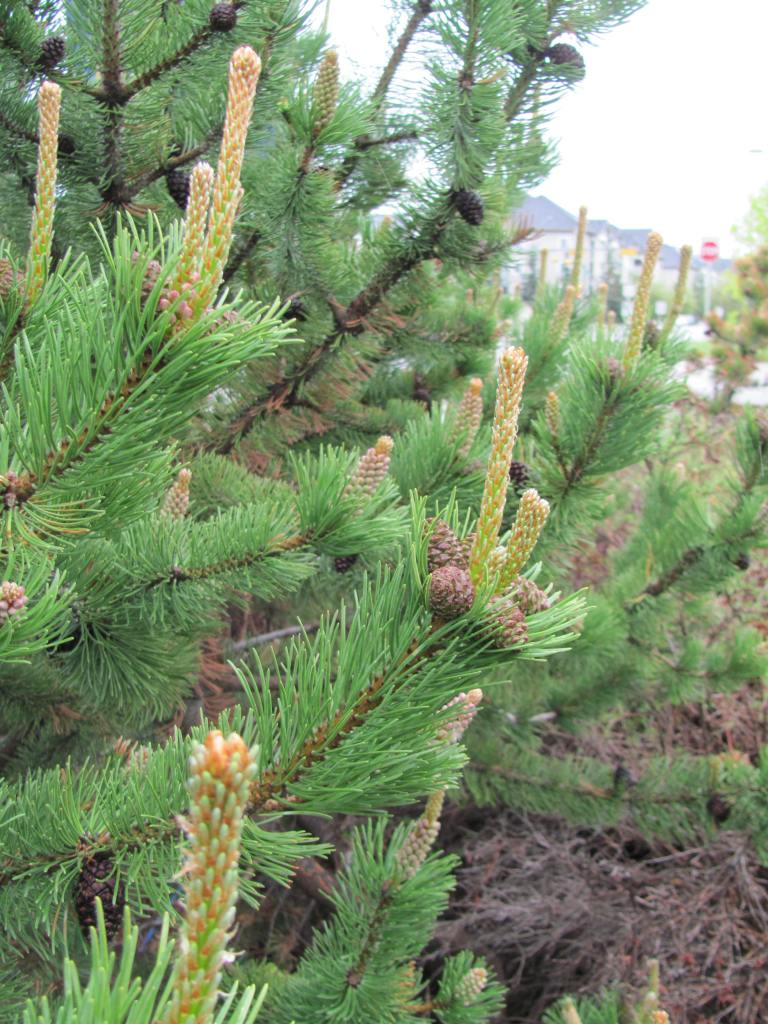Pinus mugo
Particularly at this time of year, when the new candles are formed, mugo pines may appear to be the angriest shrub of the plant world, looking for all the world like they are furiously gesturing to the idiot that cut them off in traffic. (Now you’ll never see them the same way again. You’re welcome). 😉

Mugos have shorter needles than most pines, but they’re still fairly long (up to two inches), elegant as befitting pine trees, and clustered in pairs. If you touch the needles, they’re not particularly soft like some other pines. Again, that sort of fits with the whole angry thing.
On the larger cultivars, the branches are supposed to sweep upwards in stiff arcs, but the shrubs themselves sometimes acquire a sprawling habit as they age (I completely understand this as I have, too), so this isn’t always accomplished as well as it should be. When left unkempt, unattractive bare spots often open up in the centre of the shrub. (You can – carefully and judiciously – prune the shrubs every few years to maintain a more tidy, compact shape). Smaller cultivars, such as the lovely ‘Mops’ (which really does look like a ploofy green mop turned upside down and stuffed into the ground), tend to be a tad more well-behaved.
Once you’ve got the ID down pat on these, you’ll start to realize how common they are, at least in urban areas here on the prairies. Their hardiness and compact size (small and smaller) make them tough to beat as landscape specimens. They’re pretty much a go-to for residential and commercial foundation plantings. Although it does occur in particularly harsh years, mugos tend to resist winter desiccation a bit better than many other conifers, and that’s a big deal around here.

What are your favourite conifers (small or large) in the garden? (It doesn’t matter where you live, I’d love to hear about them! They don’t have to be suitable for the Canadian prairies).
I like conifers, but mostly I think of them in the winter not the spring and summer when they are putting forth new growth. That would be the better time, I suppose.
They serve a fantastic purpose in the winter in colder climates – the persistence of foliage means all-season interest. I think that’s why we tend to consider them more at that time…they’re more visible. 🙂
Your opening paragraph made me giggle. I thought exactly the same thing.
Cultivars can be confusing. I see so many that grow as low round mounds, and a few that look more like those in your picture, with slightly more open and upright growth. I know the low dense sorts as Mugo pine, and the more open sorts as Swiss mountain pine, but they are supposedly the same thing.